Gardening In The Black Hills Of South Dakota
High Mountain Gardening
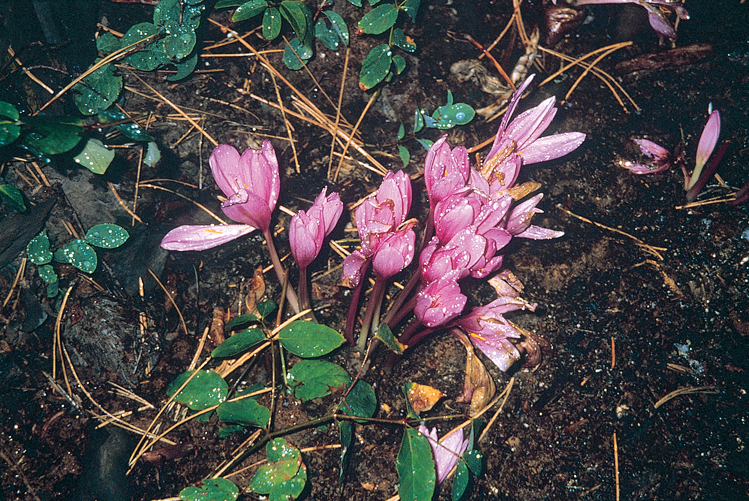 |
| Crocus in late snow. |
To escape stress-filled days of work in Rapid City, my husband and I endure a daily 50-mile round-trip commute to our home on a mile-high mountaintop near Seth Bullock Peak in the central Black Hills. We value our peace and privacy. Neighbors include chipmunks, deer, elk, coyotes, Ponderosa pines and sky. We call our acreage "Southern Exposure." The sun shines here when it shines nowhere else. And the wind blows, sometimes as a gentle Chinook, sometimes as a blizzard whirlwind.
My mother once sent me a postcard with a greeting that read, "The roots run deep when the winds are strong." That phrase from Charles Swindall has many meanings, but it could have been written for Black Hills gardeners.
With wind in my thoughts, my high country garden has become a haven for solitude — and a lifelong challenge. As a self-taught botanist, I am educated by books, seed catalogs and garden magazines. I know no fellow mountain gardeners with whom to network. Experience has taught me the most. Bad planting choices are usually fatal. Transplanting is a rare option. Darwin's survival-of-the-fittest rule applies to gardeners, as well as to their plantings. Yet, for those who survive the greatest challenges offer the richest rewards.
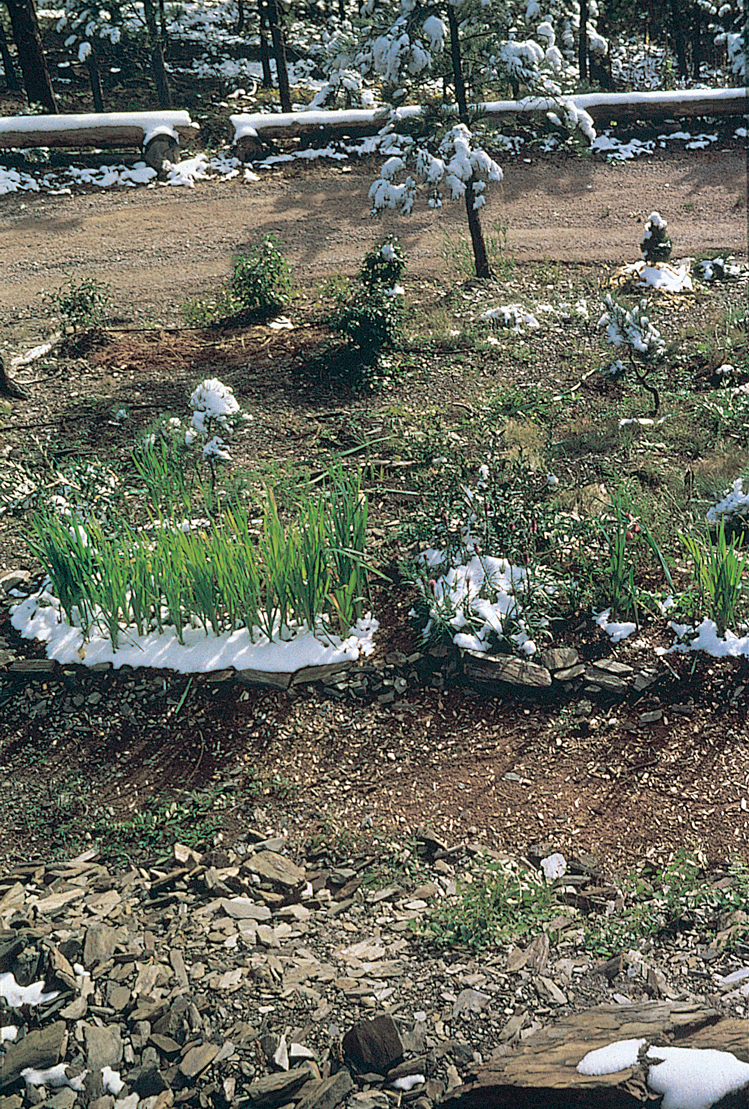 |
| An early snow in the garden of Debra Opland McLane's Southern Exposure acreage in the Black Hills. |
Our home rests on a vertical talus slope. If not at the surface, bedrock is reached within 2 inches. Although we reside in the USDA-classified Zone Four, with chaotic weather patterns and little shelter, my plants must meet the minimum requirements of Zone Three. I made several unsuccessful attempts at vegetable gardening, but the early frosts and short growing season limited my choices and time for care. Now, only perennials receive my undivided attention.
Plant selection is best dictated by xeriscaping — using environmental protection, water conservation and native plants, and building wildlife habitats for dry climates. Xeriscaping acknowledges the restraints of a 5,922-foot altitude, northern latitude, minus 33-degree January lows, annual rainfall of 15 inches and a 150-day growing season. We battle the bone-chilling gusts of winterkill, acidic soils, hungry deer, instantaneous drainage and late-spring and early-fall frosts. To all these demands, I have added another personal qualification.
Whether planning in winter or sowing in spring, my garden serves as my exercise gym, psychologist's couch and meditative church pew. I want each plant to grow with deep roots and deep meaning.
At first examination, my virgin rock pile seemed formidable. How should I begin? That year, my parents celebrated their 50th anniversary. What should I give them? The two problems melded into one solution.
Married beside a lilac hedgerow on a prairie homestead near Ipswich, my parents weathered as many storms as those shrubs. To honor their golden years, I planted lilacs the length of my driveway. These old-fashioned shrubs have proven their pioneer hardiness. Spring frosts act as welcome moisture on buds, and deer assist with pruning. The Ipswich lilacs gave me hope that my botanical efforts might not only survive, but also thrive, beyond my lifetime. They also gave me a theme for my garden.
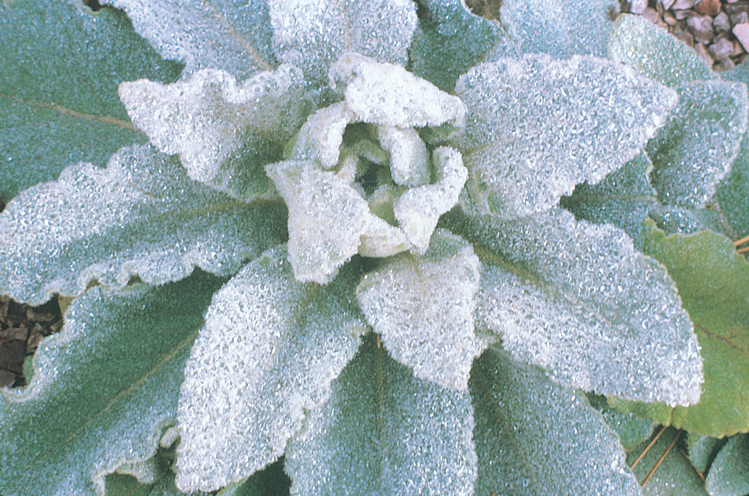 |
| Wild lamb's ear with frost. |
I choose foundation trees and shrubs, and all perennials, for durability, but also for relevance to an important person or event in my life. Buried in love, each planting expresses joy or copes with loss. If tender seedlings take deep root against the ravages of their first growing season, they are doubly blessed.
My fittest survivor, the Hawthorn tree, Crataegus toba, was named after the Greek word kratos, meaning strength. A formidable and impenetrable windbreak hedge, the trees surround our home, protecting my family. They symbolize the binding trust of a marriage that's endured life's normal tribulations, not to mention a business partnership. The first season, my original Crataegus bloomed with fragrant, pink-tipped, double-white flowers. Fall fruits attract birds, and warped trunks provide winter texture. We plant more Hawthorns every spring.
Surrounding each Hawthorn rests a bed of peonies. When my ancestors homesteaded in eastern South Dakota, the first plantings included peonies. As they graced every doorway and kitchen table of my childhood, I have memories of their intoxicating fragrance. First cultivated in Tibet, individual plants may live 100 years or longer. Preferring fall sowing, they relieve my spring chores, and the deer hate them. A deer once spit one out. It lay bare-rooted on the ground, happily sprouting new growth.
My father-in-law always gave me rock-solid advice. So his plant needed a foundation spot. At 87, his stubborn Scottish spirit never seemed to fail, though his body weakened. He walked with a diamond willow cane. I chose the Coryills avellana contorta — Harry Lauder's walking stick. A perfect winter interest, its twisted branches imitate the cane carried by the old-time Scottish comedian. Slow growing and carefree, this Zone Four plant needs extra mulch, sunshine and TLC. I fertilize with a dose of Grandpa Mac's indomitable spirit.
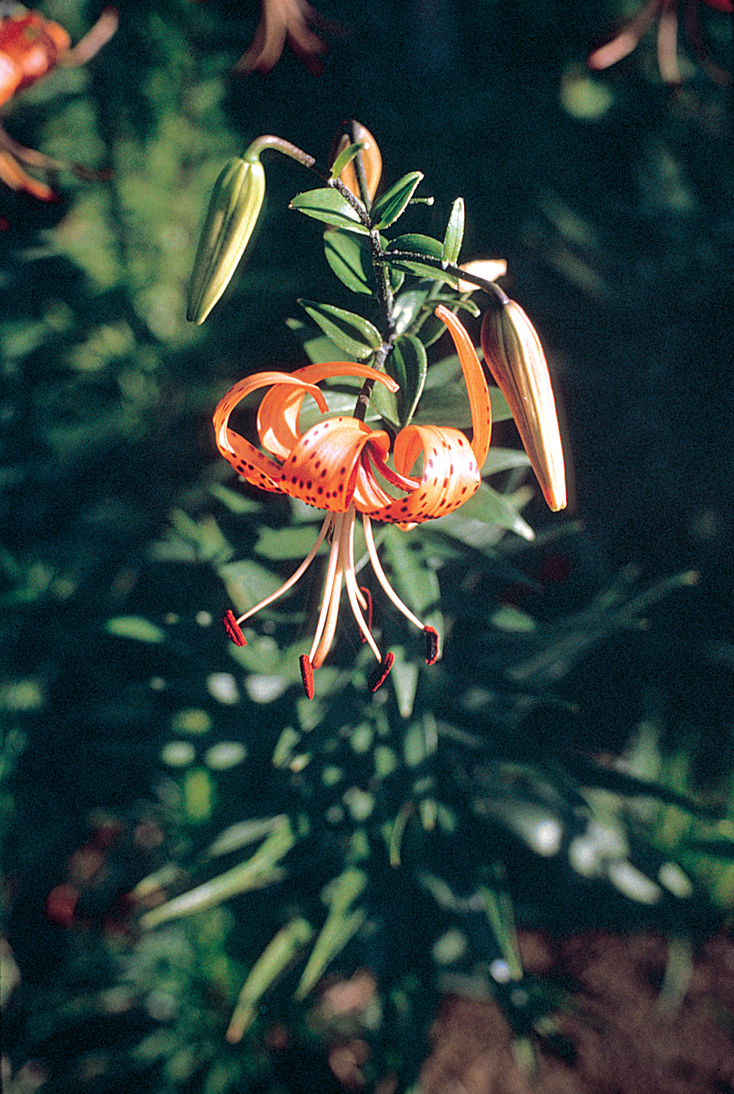 |
| Tiger lily. |
A graceful, beautiful woman, my mother-in-law favored the wild, pink rose that blooms in the Black Hills each summer. Like most wild varieties, they do not transplant well. Instead, I've discovered the wonders of Rosa rugosas. From bare-root plants, these rugged roses bloomed in their first season. Although such gems grow in many beds, I specially tend the ones near the Corylus, entwining "her" stems through "his" crooked branches.
Hardy only to Zone Four, I killed many chrysanthemums, my daughter's birth flower. Reflecting her independent spirit and youthful simplicity, wildflowers and native grasses became a successful alternative. My most difficult dry ditches bloom not only with native dame's rockets, gold yarrow, lamb's ears, goldenrod, and black-eyed Susans, but also with imported Mexican hat, coreopsis, catchfly, wallflowers, blue flax, Maximilian sunflowers, ox-eyed daisies and monarda.
My stepchildren moved to Phoenix several years ago. That summer I avenged our sorrow by beating dirt into beds shaped like teardrops falling down terraced slopes. Here, I discovered that dianthus, or sweet William, and bleeding hearts can tolerate sunshine. By fall, I transplanted purple iris from the garden at my husband's boyhood home. Forty years before, his mother had brought them from her hometown. As guardian angels, at the center I planted colchicum, meadow saffron. Greek mythology says the flower sprang from the spilled elixir Medea administered to dying Jason. Adding flowers each spring, the blossoms bring me closer to my adopted children.
True friendship has graced me but a few times. My best woman friend now lives far too many miles away. With her architect's attention to detail, it was she who first taught me the beauty of perennial gardening. Her beds always included forsythia. Tested at experimental stations in North and South Dakota, the meadowlark variety has proven bud-hardy to -35 degrees. Meadowlark hedgerows brighten both entryways.
Every garden should have something borrowed. Through the windows of my childhood home, we watched our neighbor's garden grow. Along with pounds of rich loam, I've transplanted her cuttings of bishop's weed, snow-on-the-mountain, lady ferns and patriot hostas. The transplants are now in need of transplanting. Mrs. Christianson passed away and, to my horror, the renter piled garbage on her garden. I was so grateful I had rescued part of it.
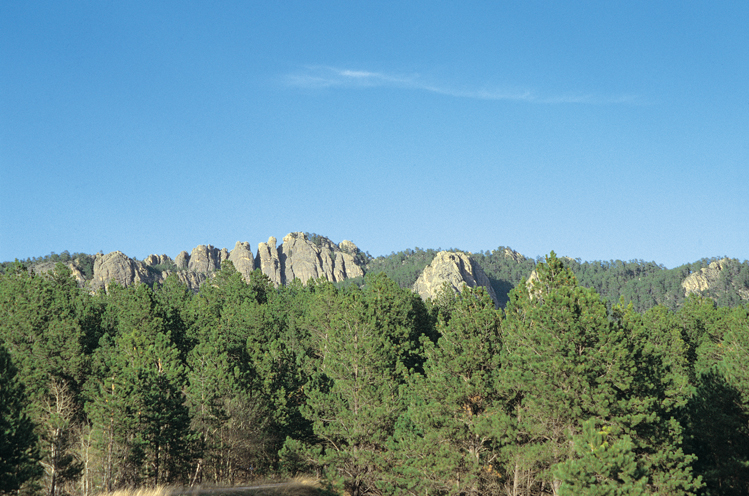 |
| The view from Southern Exposure. |
Chosen for myself, each year I sow special plants for every season. Spring bloomers include snowdrops, winter aconite, and johnny jump-ups. I cherish one early blossom above the others. During a Mother's Day walk, I stepped on a tiny purple bud. Hidden by pine needles, pasqueflowers, our state flower, filled the woodland slopes. Whether budding among natural kinnikinnick vines or sown red sedum, this anemone highlights my rock gardens.
Summer choices are limitless — from oriental poppies to winter-hardy Gladiolus nanus, from lupines to Gaillardia grandiflora. Among these, lilies became my favorites. As natural-blooming secrets, day lilies are rare mountain surprises, but Asiatic hybrids are my true delights. Flowering longer, each bloom expresses the depth of Eastern philosophy. Fragrant or not, their names reflect their beauty: expression, con amore, dreamland, stargazer and grand paradiso. With perfect timing, all varieties bud just as spring fades.
Uncommon but exceptional, fall bloomers survive when all else has died. Sedum autumn joy flowers in early snowfalls. Budding from the top down, the unique Lialris spicata impresses me, as well as the butterflies. Outside, it lasts into early September. Inside, it is preserved in dried arrangements.
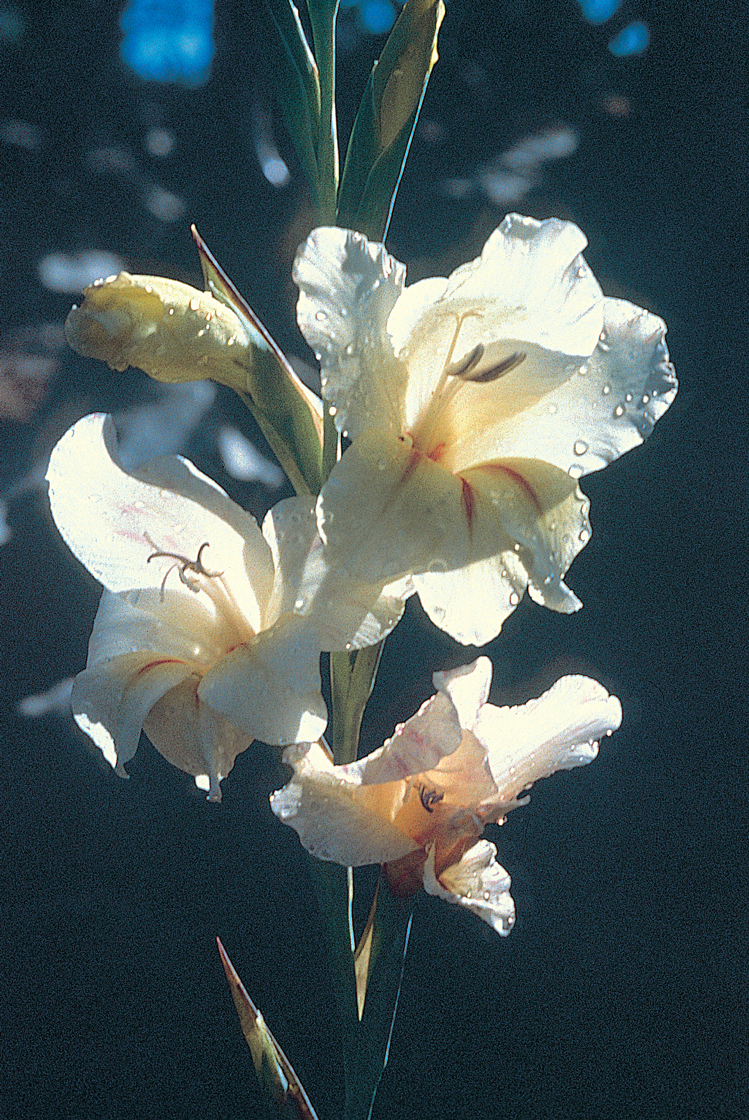 |
| White glad. |
Perfect choices in good drainage, bulbs are the interlocking threads throughout my beds. In honor of Wales, daffodils naturalize every hillside. Quite by accident, I discovered that deer despise "daffs" as much as they adore tulips. In her garden, my daughter designed a bed shaped like Simba's face. King Alfred daffodils symbolized the fur. For cheeks, we used Princess Irene tulips, my mother's namesake variety. The deer could not endure the putrid smell of the daffs to chow down on their favorite food group. Throughout the garden, Grandma's tulips were the only survivors.
Although my successes are thrilling, my failures are equally disappointing. I've lost hydrangea, a golden hinoki cypress, purple fringe smoke trees, thuja, shamrock hollies, skyrocket junipers and hyacinths. Planted for my father, a Norway spruce needed much more moisture than I could provide. I am still looking for a Scandinavian replacement.
Whether reasons for failure are deer or drought, winterkill or illiterate mistakes, I learn as much from errors as from accomplishments. I am continually behind in designing, landscaping and planting; life proceeds faster than time, or budgeting. This year, our family witnessed two births and a wedding. Last August, a dear friend died of cancer. Grandpa Mac passed away in March, as did his Corylus.
Like anything worthwhile, deep roots and deep feelings do not come easy. I'm training myself to take one day at a time — one trench for irrigation and one load of compost, one shovel of dirt and one teardrop of moisture.
During a winter-sunshine day, my daughter and I plodded along on yet another rock wall. She stopped and said, "Hey mommy, me and you — we're making a view!" When I reach my rocking chair years, I can only hope she has inherited the strong heart necessary to face the winds of change. I promise to give her deep roots.
Editor's Note: This story is revised from the March/April 2000 issue of South Dakota Magazine. To order a copy or to subscribe, call (800) 456-5117.
Gardening In The Black Hills Of South Dakota
Source: https://www.southdakotamagazine.com/high-mountain-gardening
Posted by: adornofreeack.blogspot.com

0 Response to "Gardening In The Black Hills Of South Dakota"
Post a Comment